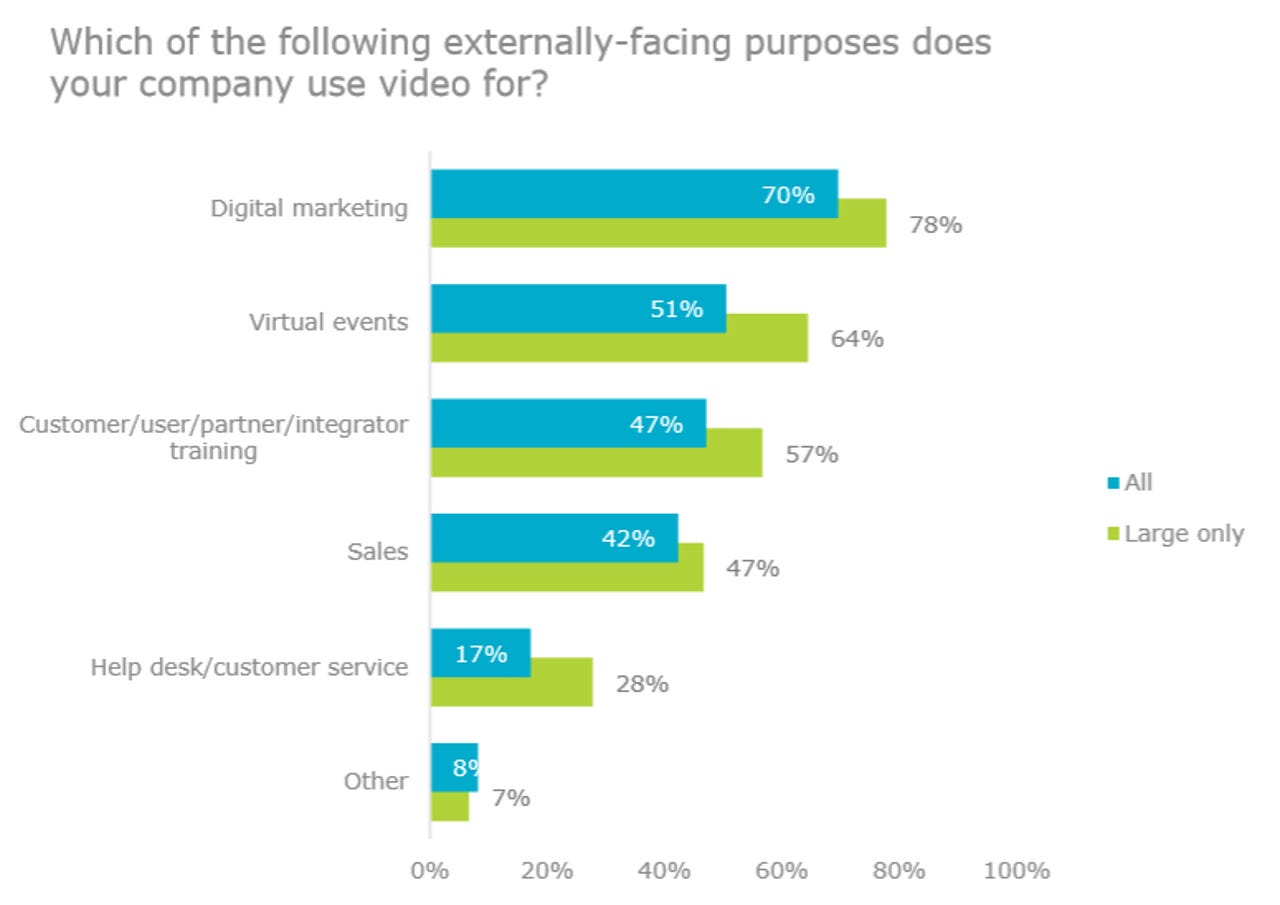Video use is booming in organisations according to new report

The use of video is becoming all-pervasive as its use extends across departments, and teams across the business are focusing on different styles of video to get their point across.
Israel-based video technology partner Kaltura has published its State of Video in the Enterprise report. It polled over 650 individuals for its fifth annual survey in September 2018 across a range of large and small organisations.
It found that almost everyone (98 percent) saw video in their organisation as steady or growing. More companies (24 percent) said that they used video to train customers, and three quarters use it for training, learning and development.
Businesses place a high value on video - especially video communication and learning - almost all respondents (98 percent) said that video is valuable for improving communication and training employees.

Large employees use video for corporate communications with 88 percent of respondents saying they used video in this way compared to 60 percent overall
Connecting employees was cited by 95 percent of respondents as having a positive impact alone with encouraging employees to share knowledge (93 percent).
Companies tend to use marketing videos for high-profile awareness campaigns with 70 percent of respondents reporting that their company uses video for digital marketing, including on websites, social media, and in promotional emails.
People create video in their personal lives such as sharing events and thoughts with family and friends and sending video messages.
This behaviour has reached the workplace too. People are also creating video at work to keep their colleagues updated, demonstrating work-related skills, or by reaching out to clients and prospects.
Video is certainly seen as a valuable tool and the survey highlights clues to why webcasting has grown so much. Previously webcasting, which was once restricted to one or two big broadcasts a year, seems to have developed into a regular practice, especially for larger organizations.
Webcasting has become part of regular business working for businesses. Three quarters (76 percent) of large companies said they run at least one webcast per year, almost half (46 percent) say they average at least one webcast per month, and 27 percent average at least one webcast per week .
An overwhelming 98 percent say video is valuable for improving communication, while 98 percent also say video fosters better and faster learning and development. over nine out of ten (92 percent) think video makes executives more relatable and personal.
Kaltura's Co-founder, President and General Manager - Enterprise & Learning, Dr. Michal Tsur. said: "Enterprises are now launching multiple video-based communication channels.
They are using live webcasts, as well as video on-demand messaging, for more engaging communication across the organization. There is growing demand for a "video first, mobile first" approach in many employee communications."
Related content
Tech loyalty threatens productivity in the workplace
There is disconnect between the tech that workers want and what leadership is providing - and employees are not backing down.
Marketing efficiencies top of mind for CXOs in 2019
Today's consumers have shorter attention spans across a variety of media, so how do brands cope with these changing habits to keep their customers?
Braidio announces WorkStreams platform to optimise enterprise productivity
Platforms today need to thread all necessary information, knowledge, and business tools into a single point of productivity.
Consumers prefer online ads to video ads, despite our perceptions
Although video was a major predicted trend in 2018, consumers do not prefer video ads over other types of online advertisements, according to a new survey.